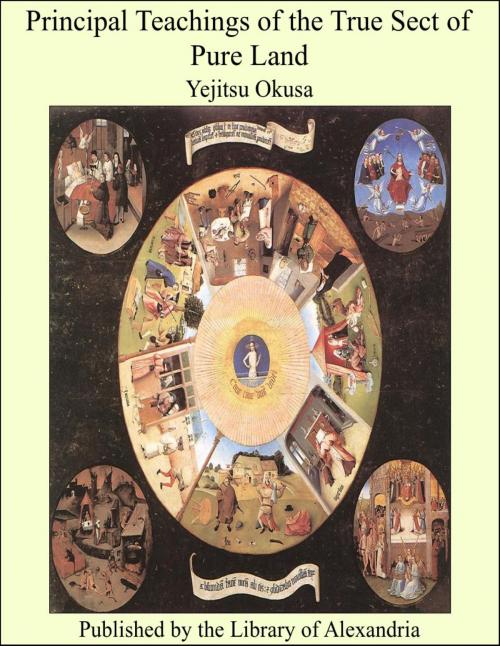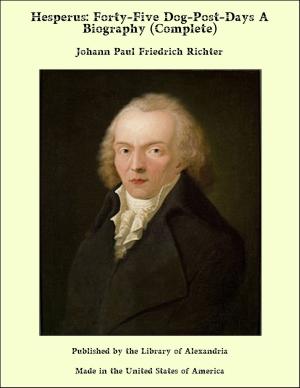Principal Teachings of the True Sect of Pure Land
Nonfiction, Religion & Spirituality, New Age, History, Fiction & Literature| Author: | Yejitsu Okusa | ISBN: | 9781465536181 |
| Publisher: | Library of Alexandria | Publication: | July 29, 2009 |
| Imprint: | Library of Alexandria | Language: | English |
| Author: | Yejitsu Okusa |
| ISBN: | 9781465536181 |
| Publisher: | Library of Alexandria |
| Publication: | July 29, 2009 |
| Imprint: | Library of Alexandria |
| Language: | English |
SHINRAN SHONIN. DURING the past thirty centuries that have elapsed since the death of Shakyamuni, his Good Law has grown into a huge tree with many outstretching branches; and each of these is now everywhere endeavoring to propound the Law according to its own way of interpretation, and also to perpetuate its own religious practice. Among these branches, the one that most clearly indicates the Blessed One’s way of salvation and that most thoroughly teaches his life of faith is the True Sect of Pure Land; for surely it is the doctrine of this Sect that the ultimate signification of the Buddha’s will to save is faithfully preserved. While it goes without saying that this True Sect of Pure Land is the doctrine preached by the World-honored Shakyamuni Buddha himself, it was not until some seven hundred years ago, that is, until the founder of the True Sect, Shinran Shonin, stayed in the Province of Hidachi to promulgate a new Buddhist teaching, that this Sect came to be recognised as such, forming an independent organisation among the Buddhists. Shinran Shonin was born on April 1 in the third year of Joan, 1173 A.D., in the village of Hino near Kyoto. His family was of the Fujiwara clan that occupied at the time the most important position in the empire, and his noble father, Arinori Hino, held an honorable office at the imperial court. The Shonin was the eldest son, and from this fact we can easily see what an auspicious prospect he had before him; for could not he, as heir to a noble family, occupy a high official rank, wield his influence as he willed, and indulge in the enjoyment of a worldly life? But the death of his parents, while he was yet a child, made him depend upon his uncle, Lord Noritsuna; and this unfortunate circumstance left a very deep impression on his young mind, which, naturally sensitive, now brooded over the uncertainty of human life. At the age of nine, he left home to lead a monkish life at a Buddhist monastery called Shoren-in at Awada-Guchi, where Jiyen Sojo, the high priest, took him as disciple, shaved his head, and gave him the Buddhist name, Han-yen. After this, the Shonin went to the Mount Hiye, and staying at the Daijo-in which was in the Mudo-ji, pursued his study under various masters in the deep philosophy of the Tendai Sect, and disciplined himself according to its religious practices. He also sought to enlarge his knowledge by delving into the doctrines of all the Other Buddhist sects; but he was unable to reach the true way leading to a release from this world of pain. He went even so far as to invoke the aid of the gods as well as the Buddhas to make him realise an immovable state of tranquillity; but all to no purpose
SHINRAN SHONIN. DURING the past thirty centuries that have elapsed since the death of Shakyamuni, his Good Law has grown into a huge tree with many outstretching branches; and each of these is now everywhere endeavoring to propound the Law according to its own way of interpretation, and also to perpetuate its own religious practice. Among these branches, the one that most clearly indicates the Blessed One’s way of salvation and that most thoroughly teaches his life of faith is the True Sect of Pure Land; for surely it is the doctrine of this Sect that the ultimate signification of the Buddha’s will to save is faithfully preserved. While it goes without saying that this True Sect of Pure Land is the doctrine preached by the World-honored Shakyamuni Buddha himself, it was not until some seven hundred years ago, that is, until the founder of the True Sect, Shinran Shonin, stayed in the Province of Hidachi to promulgate a new Buddhist teaching, that this Sect came to be recognised as such, forming an independent organisation among the Buddhists. Shinran Shonin was born on April 1 in the third year of Joan, 1173 A.D., in the village of Hino near Kyoto. His family was of the Fujiwara clan that occupied at the time the most important position in the empire, and his noble father, Arinori Hino, held an honorable office at the imperial court. The Shonin was the eldest son, and from this fact we can easily see what an auspicious prospect he had before him; for could not he, as heir to a noble family, occupy a high official rank, wield his influence as he willed, and indulge in the enjoyment of a worldly life? But the death of his parents, while he was yet a child, made him depend upon his uncle, Lord Noritsuna; and this unfortunate circumstance left a very deep impression on his young mind, which, naturally sensitive, now brooded over the uncertainty of human life. At the age of nine, he left home to lead a monkish life at a Buddhist monastery called Shoren-in at Awada-Guchi, where Jiyen Sojo, the high priest, took him as disciple, shaved his head, and gave him the Buddhist name, Han-yen. After this, the Shonin went to the Mount Hiye, and staying at the Daijo-in which was in the Mudo-ji, pursued his study under various masters in the deep philosophy of the Tendai Sect, and disciplined himself according to its religious practices. He also sought to enlarge his knowledge by delving into the doctrines of all the Other Buddhist sects; but he was unable to reach the true way leading to a release from this world of pain. He went even so far as to invoke the aid of the gods as well as the Buddhas to make him realise an immovable state of tranquillity; but all to no purpose















